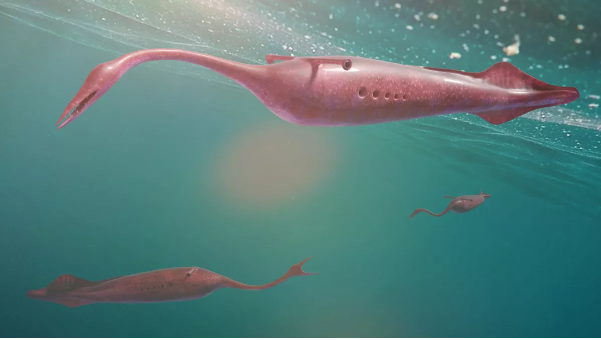The Tully monster is a creature that roamed Earth’s oceans 300 million years ago, and its bizarre fossils have confounded researchers for decades. Some experts have even debated whether the creature possessed a backbone. This evolutionary oddity was exclusively found in the Mazon Creek fossil beds in Illinois, and its anatomy remains open to interpretation. A recent study, published in the journal Palaeontology, attempted to classify the Tully monster, adding to a slew of similar investigations.
Recent Tully monster studies suggest that it could be either a vertebrate relative of modern cyclostomes or an unknown invertebrate. However, a group of Japanese researchers claims to have solved the mystery with the help of a 3D laser scanner. They scanned over 150 Tully monster fossils to create color-coded 3D maps of the creature’s anatomical structures. They also X-rayed one well-preserved proboscis to examine the animal’s teeth.
The researchers found that the Tully monster was likely an invertebrate, as features previously used to argue that the creature was taxonomically related to cyclostomes were misinterpreted. The authors suggest that the bulging-based teeth analyzed in the new study are not comparable to cyclostome teeth, which are thinner at the base. They also claim that the appearance of segmentation in the body was mistaken for gills. Most importantly, the segmentation found on the creature’s head is not known in any vertebrate lineage, indicating a nonvertebrate affinity.
While the findings are exciting, not everyone is convinced. Victoria McCoy, an assistant professor at the University of Wisconsin-Milwaukee, led a 2016 study placing Tully monsters near cyclostomes and a 2020 study that found Tully monster tissues were made up of proteins like those of vertebrates. However, she is still impressed by the researchers’ use of 3D imaging, and though she has minor technical quibbles with some of their conclusions, she acknowledges that it advances our understanding.
The Tully monster’s classification is significant because its uniqueness could expand the diversity of whatever group it ends up in, changing the way we think about that group. The latest study proposes a potential compromise for the discrepancies: that Tully monsters could possibly be nonvertebrate chordates like modern tunicates or lancelets. However, the Tully monster’s place on the evolutionary tree remains unclear for now.
Source: www.livescience.com







